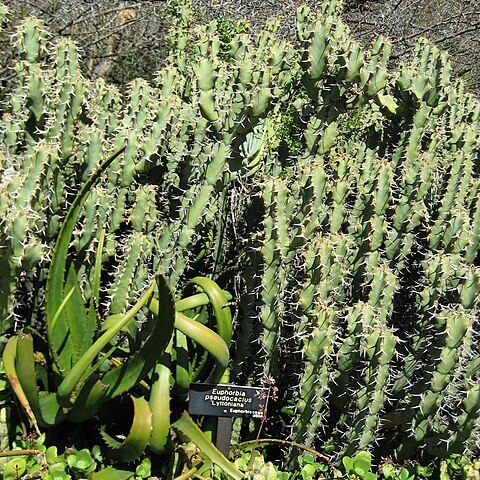Like E. radyeri but without rhizomatous branches around plant, branches 20-60 mm thick, slightly constricted into elongated slightly elliptical (but mainly parallel-sided) segments, green to slightly grey-green, ovary without extended calyx around base. Flowering time Oct., Nov.
Similar to E. caerulescens but not rhizomatous, stems longer, 1.3-2.0 m, with less obvious constrictions and spines shorter, 2-6 mm long.

